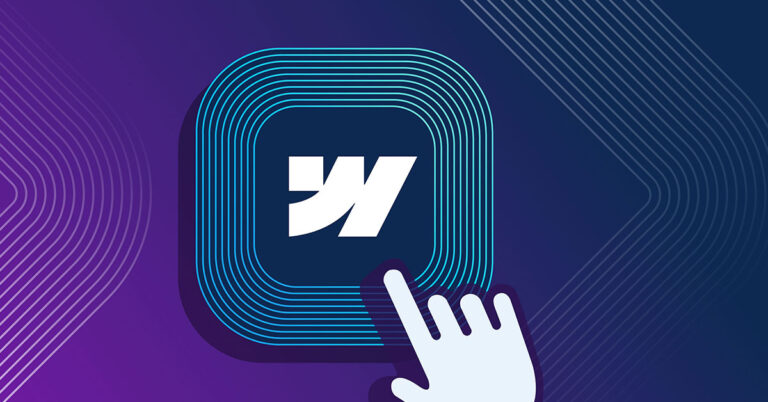Virtual event analytics give you the incredible ability to see exactly what your audience is engaging with, in what order, and for how long. Combine this visibility with the fact that you may have 4x or more attendees than at your in-person events, and that’s a lot of data. All of this data gives you many avenues for measuring virtual event success. It also allows marketers to use events more strategically as part of your overall integrated marketing strategy.
Identifying which metrics you want to track and how you’ll use them is an important part of virtual event planning. Make sure to ask your virtual event platform vendor if and how they provide these analytics. (Dashboards that allow you to slice and dice the findings in multiple ways are the easiest way to gain, share and use these insights.) And if you’re combining multiple platforms to provide all of your event capabilities (you undoubtedly are), you’ll also need to make sure these tools can integrate and pass data to each other.
There are lots of great resources already about KPIs for measuring virtual event success. In this article, we’ll focus on how we use virtual event analytics to optimize engagement before, during and after events.
Optimize digital interactions and accelerate pipeline with audience data.
Knowing your audience is foundational to any marketing strategy. The audience data gleaned from events can help you create more accurate personas that lead to more relevant messaging and more engaging campaigns. It can also help your sales team identify and pursue quality leads. Here are three categories of audience metrics to pay attention to from virtual, hybrid and in-person events.
Audience characteristics.
The best way to learn about your audience is to ask them. Most marketers opt to ask for the bare minimum of information on registration forms to encourage fast, seamless signups. Virtual events, however, provide an opportunity to ask for more details in order to provide a more customized event experience. The chance to get personalized session recommendations or be matched with other attendees in chat groups may encourage registrants to identify their role, top pain points, topics they’re most interested in, and more.
Make the most of it:
- Before the event: Include optional fields on your registration form. Then segment attendees intro tracks or groups based on interest, time zone, language or other characteristics.
- During the event: Serve up recommendations for sessions, chat groups, or breakouts that match the participant’s interests. Some platforms will even allow you to serve up content in the correct language if you have that information.
- After the event: Combine data provided during registration with attendee engagement data to create a fuller picture of attendee intent. Import this data into your CRM to help with lead qualification and provide sales with context for more relevant follow-up. Pull it into your marketing automation platform to help segment event leads for more personalized post-event nurtures.
Registration source.
What are the best ways to attract attendees? Registration source tracking lets you identify whether attendees are coming from organic search, paid ads, your email promotions, a third-party partner, social media or somewhere else entirely—so you can determine which outlets are best and optimize your spend accordingly.
Make the most of it:
- Before the event: Tag your event promotions so you’ll know which ones drive the most traffic.
- During the event: Focus your event social on your most popular channels.
- After the event: Reduce or eliminate paid advertising from your poor performing channels and use your most popular channels for retargeting campaigns.
Account-level analytics.
How many attendees from each company came? Did they attend the same sessions or divide and conquer? Were they from a single buying unit or many? What seniority levels were represented? Any trends by level to note? Account-level metrics can give you incredible insight into the buying behavior and purchase readiness of your target accounts.
Make the most of it:
- Before the event: Review registrations to understand who is coming to the event from your target accounts.
- During the event: Encourage your sales team to engage highly represented target accounts in chats and breakout sessions.
- After the event: Provide account-level metrics to your sales team for more intelligent follow-up.
Improve event experiences and drive post-event engagement with content metrics.
The following four virtual event analytics can help you understand what attendees thought of your sessions, presenters, and tracks. Don’t review this data in a vacuum, though. Look for trends related to time of day, day of event, and promotional level to better understand all the factors causing attendees to flock to, or miss, your sessions.
- Session (or track) attendance. Analyze unique visitors to each session or track to understand which topics were most (and least) popular. For user conferences, this can also give you insights into new products and services your audience may be interested in.
- Session dwell time. How long did the average user stay in each session? The higher the average dwell time is the more engaging the session!
- Session chat engagement. A high volume of messages submitted in the chat may indicate a great topic, a highly interested audience, or a good presenter. While you can also export the actual chat content into a spreadsheet, evaluating individual messages at scale would be difficult, if not impossible—but digging into this content for a few sessions can unlock the secrets of what worked and what didn’t.
- Content and presenter ratings. One of the most basic ways to find out which sessions and presenters were most compelling, and which were not. While star ratings don’t help you know why your content didn’t work, they are a crucial piece of information as you look at how to plan an even better event the next time around. If you’re able to offer a free-text field, do it. You might not have time to read every entry, but this information can be very helpful for understanding the success or failure of your outliers.
Make the most of it:
- During the event: Use just-in-time notifications to drive traffic to less popular sessions. If you discover that attention lags at a certain time of day, send out an email reminding attendees of a not-to-miss experience during that time.
- After the event: Highlight your top sessions and presenters in your post-event engagement emails. Consider creating a follow-up asset or webinar on a popular topic, product or initiative.
- Before your next event: Incorporate your learnings into session planning. Make sure to highlight the factors that you now know are important to your audience, such as a special track for that hot topic, or shorter sessions to meet busy schedules. And of course, use your best engagement numbers as your targets for your next event.
Create stronger relationships with virtual event sponsor and networking analytics.
Sessions are a big part of your virtual event, but they aren’t the full experience. Use the following virtual event analytics to understand and optimize two of the more challenging components of online conferences.
Sponsor booth engagement.
Tracking this data not only helps you prove value to your sponsors, but helps you understand whether your sponsor offerings are hitting the mark.
Make the most of it:
- During the event: Monitor booth engagement and use just-in-time notifications to drive traffic to individual booths or the entire exhibit hall.
- After the event: Provide sponsors with data about their booth traffic and engagement, including dwell time, resources downloaded, video views and follow-up engagement requests. Provide even more value with a custom PDF containing their dashboard. Look for ways to engage your most popular sponsor more fully in your next event or in a follow-up webinar.
- Before your next event: Analyze sponsor booth traffic trends to determine which booth features, such as downloads, videos, or offers, were most popular. Use this data to create optimized sponsor booths for your next event.
Networking activity.
Using a community, such as Circle, to host topic-based networking channels is a great way to provide structured opportunities for attendees to connect with like-minded peers. Compare the volume of messages in these communities to learn which topics, products, or initiatives are of high interest to your attendees; which users, roles or accounts were most active; which times of day draw the most or least networking activity; and more. A high volume of private messages can also indicate that attendees are making deeper/more personal connections.
Make the most of it:
- During the event: Highlight popular channels in your end-of-day email to encourage even greater involvement the next day.
- After the event: Look for ways to continue the conversation in especially active channels after the event. Depending on the platform you use, you may be able to leave the community open for further engagement. Another option is to invite participants to continue the discussion on a different platform.
- Before your next event: Examine your most and least popular channels with an eye to what worked and what didn’t. Were there topics that just didn’t resonate? Or were there so many channels that attendee attention was spread thin? Use your findings to guide which networking opportunities you offer at your next event.
The Iron Horse insight.
Your event data is only as good as your ability to gather, analyze, and most importantly, use it. It takes careful planning and specialized resources to keep your data from languishing in spreadsheets. It’s worth the investment to capitalize on the incredible opportunity to drive relationships and growth from your virtual and hybrid events.




